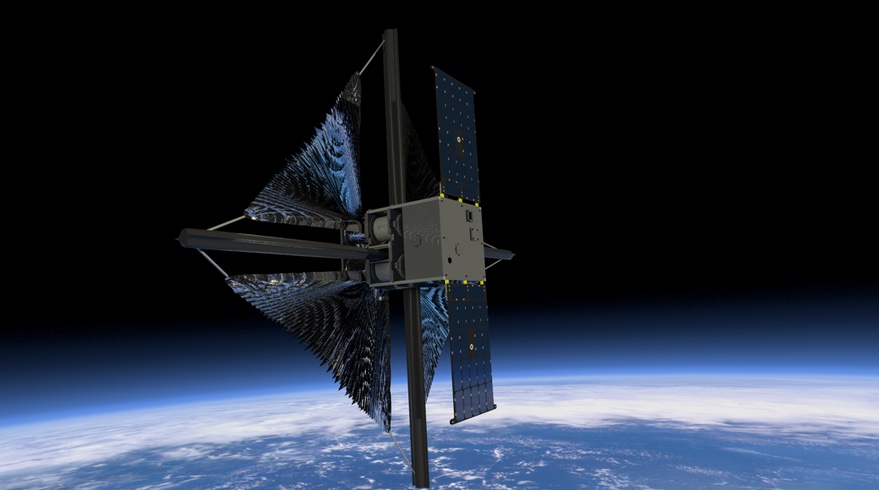WASHINGTON — Rocket Lab will launch a NASA technology demonstration satellite under an unconventional arrangement as the agency works on a more standardized approach for launching smallsats.
Rocket Lab announced Oct. 6 that NASA selected the company to launch the Advanced Composite Solar Sail System (ACS3) spacecraft on an Electron rocket. The 12-unit cubesat will test the deployment of a solar sail using composite booms seven meters long. Those booms, which will unspool over the course of 20 to 30 minutes, are designed to be lighter that traditional metallic booms while also being less susceptible to thermal distortion.
ACS3 will be part of an Electron rideshare mission launching in mid-2022 from New Zealand. The rocket’s kick stage will deploy other, unnamed payloads first, then raise its orbit to deploy ACS3 in its higher orbit.
Rocket Lab’s release did not disclose the value of the contract in the release, issued shortly after markets closed, but the company’s shares soared in after-hours trading and closed up 10% in trading Oct. 7. A NASA spokesperson said late Oct. 7 that the contract was valued at $1.092 million.
A NASA fact sheet about the mission stated the launch will be conducted through a Small Business Innovative Research (SBIR) Phase 3 contract. Such contracts cover “the commercialization of innovative technologies, products, and services” developed under Phase 1 and Phase 2 awards, according to NASA. Phase 3 awards can be made based on work “that is derived from, extends, or concludes efforts” from earlier SBIR awards, without the need to conduct another competition.
NASA spokesperson Tiffany Blake said Oct. 8 that Rocket Lab “had been awarded competitive Phase I and Phase II awards with the Department of Defense” that allowed NASA to make the Phase 3 award for the launch. She did not disclose the specific awards that made Rocket Lab eligible for a Phase 3 launch contract.
According to the federal government’s SBIR.gov database, Rocket Lab has only a single SBIR award. The company received a Phase 1 SBIR award from DARPA in 2015 for studies that included examining the use of Electron as an upper stage for DARPA’s XS-1 spaceplane, which has since been abandoned, as well as flight data intended to support the development of an autonomous flight termination system.
The award illustrates the wide range of approaches NASA has used for launching cubesats and other small satellites. That has ranged from secondary payload accommodations on other NASA missions to the acquisition of dedicated small launch vehicles, as the agency did in 2020 for its CAPSTONE lunar smallsat mission, which Rocket Lab will launch on an Electron no earlier than late this year.
NASA is implementing a more consolidated approach for what it calls “Venture Class” launch services. The Venture-Class Acquisition of Dedicated and Rideshare (VADR) Launch Services program in intended to procure launches of small vehicles for risk-tolerant smallsats. NASA will provide a lower level of mission assurance than it offers for higher-value missions, and the launches will be licensed by the Federal Aviation Administration.
NASA issued a request for proposals for VADR in May. At the time, the agency said it expected to make awards in October, selecting companies to be eligible to compete for missions over the next five years.
Separately, Rocket Lab, whose launches from New Zealand had been on hold because of COVID-19 lockdowns in the country, announced Oct. 11 that it will resume launches with two Electron missions for geospatial intelligence company BlackSky in November. The two launches were arranged by Spaceflight and will each carry two BlackSky satellites. The first is scheduled for a window between Nov. 11 and 24, and the second no earlier than Nov. 27.
